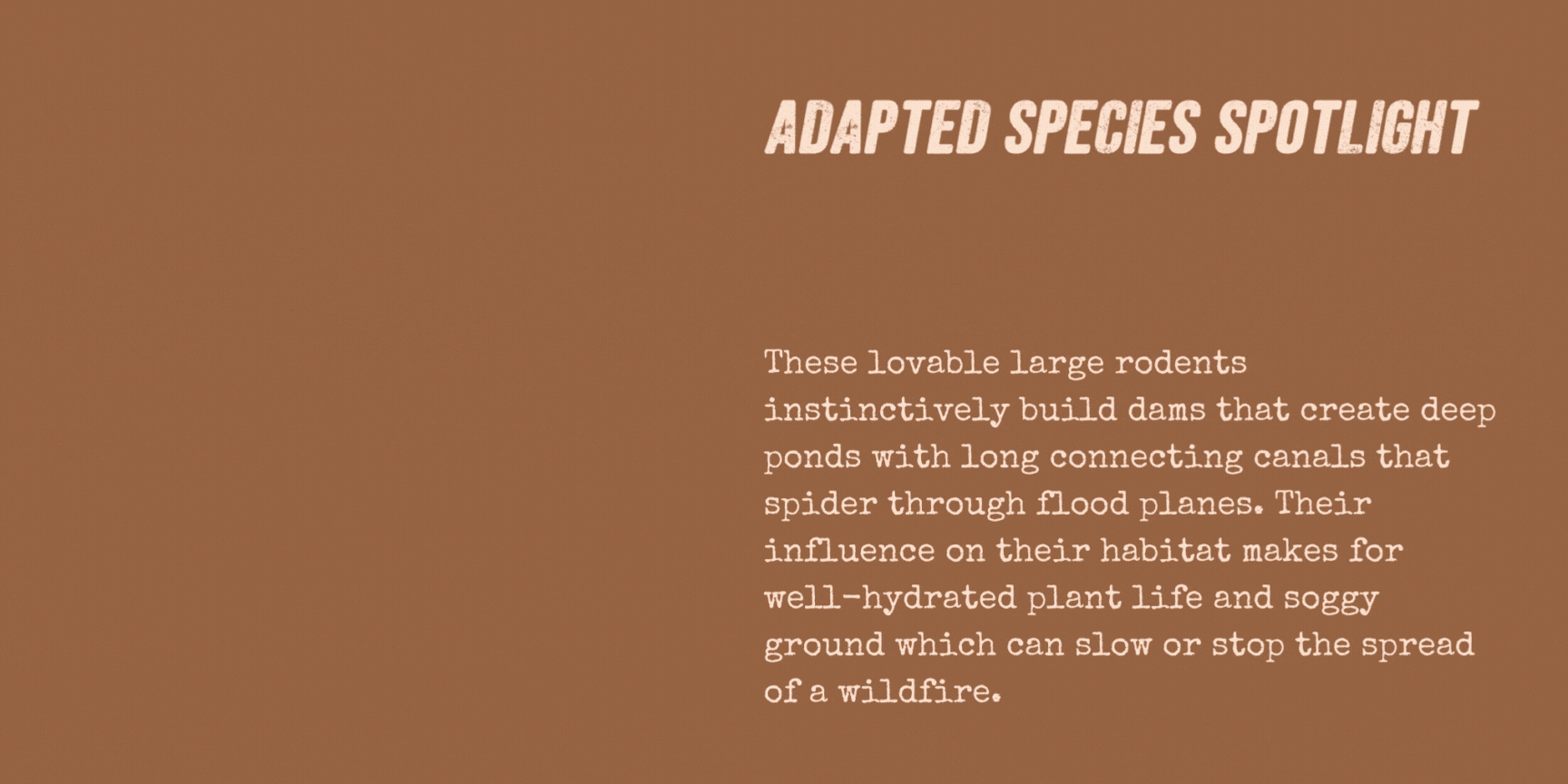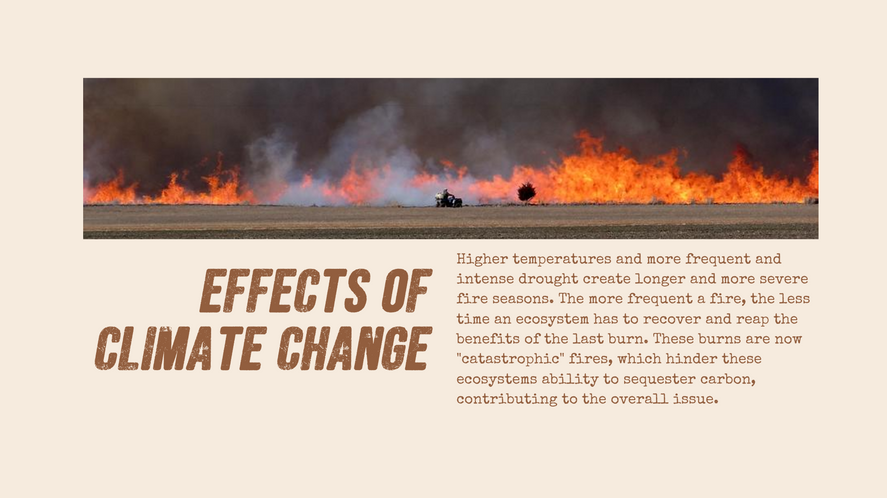
.png)




Grasslands are a pervasive ecosystem and cover 40% of the planet. How could a plant as small as a blade of grass out compete something as large as a tree? While more trees are very susceptible to damage by wildfire, grasslands embrace it.

While many look to forests as the biggest carbon sinks, or entities that absorb carbon from the atmosphere, grasses often have root systems that extend 6-20 feet into the soil. Thus, carbon is stored deep in the ground where it won't be released when burnt as might happen with a tree in a forest.


evolved
for the heat

Meet Todd.
As a professor , a firefighter, and a land manager, Dr. Todd Aschenbach is on the cutting edge of the science behind fire stewardship. His goal is to push our use of prescribed burned to the next level in grassland ecosystems to bring these delicate ecosystems back from the brink. Aschenbach's research asks, how can closely mirroring natural fire regimes maximize healthy ecological succession of an ecosystem?

GIANTS
THRIVE ON FIRE
Meet Melissa.
When she puts her fire helmet on, she keeps her plant biologist hat on, working as a fire resource advisor. Melissa works with Giant Sequoia Trees, which are specially adapted for fire. Without the right frequency and intensity of wildfire, Sequoia cones could not open up to release their seeds onto fire-cleared forest floor.























